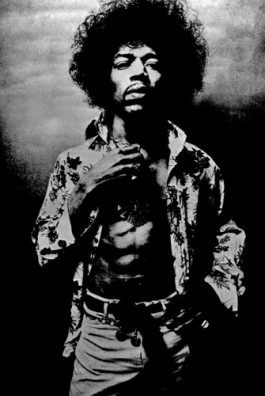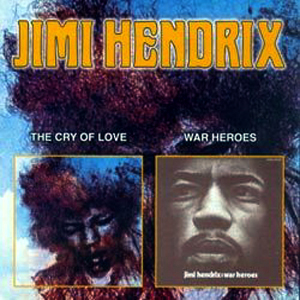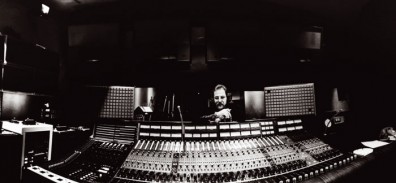Jimi Hendrix Life, Times & Fire
Gypsy Sun and Rainbows
After the departure of Noel Redding from the group, Hendrix rented the eight-bedroom ‘Ashokan House’ in the hamlet of Boiceville near Woodstock in upstate New York, where he spent some time through the summer of 1969. Manager Michael Jeffery, who had a house in Woodstock, arranged the stay, with hopes that the respite would produce a new album. To replace Redding as bassist, Hendrix had been rehearsing and recording with Billy Cox, his old and trusted Army buddy.
Woodstock 1969
Mitchell was unavailable to help fulfil Hendrix’s commitments at this time, which include his first appearance on US TV - on the Dick Cavett show - where he was backed by the studio orchestra, and an appearance on The Tonight Show where he appeared with his new bass player Billy Cox, and session drummer Ed Shaughnessy sitting in for Mitchell. Mitchell returned in time for the Woodstock music festival on August 18, 1969, for which - in an effort to expand his sound beyond the power trio format - Hendrix then added rhythm guitarist Larry Lee (another old friend from his R&B days), and percussionists Juma Sultan and Jerry Velez.
They recorded some jam-based material such as “Jam Back At The House”, “Shokan Sunrise” (posthumous title for untitled jam), “Villanova Junction”, and early renditions of the funk-driven centerpieces of Hendrix’s post-Experience sound: “Machine Gun”, “Message to Love” and “Izabella.”
Bad weather and logistical problems caused long delays, so that Hendrix did not appear on stage until Monday morning. By this time, the audience (which had peaked at over 500,000 people) had been reduced to, at most, 180,000, many of whom merely waited to catch a glimpse of Hendrix before leaving. Festival MC Chip Monck introduced the band as “The Jimi Hendrix Experience”, but Hendrix quickly corrected this to “Gypsy Sun And Rainbows, for short it’s nothin’ but ‘A Band Of’ Gypsies” and launched into a two hour set, the longest of his career. As well as the two percussionists, the performance notably featured Larry Lee performing two songs with Lee sometimes soloing while Hendrix played rhythm in places. Most of this has been edited out of the officially released recordings, including Lee’s two songs, reducing the sound to basically a three-piece. The concert was relatively free of the technical difficulties that frequently plagued Hendrix’s performances, although one of his guitar strings snapped while performing “Red House” (he kept playing regardless). The band, unused to playing large audiences and exhausted after being up all night, could not always keep up with Hendrix’s pace, but in spite of this the guitarist managed to deliver a memorable performance, climaxing with his highly-regarded rendition of the “The Star-Spangled Banner”, a solo improvisation which is now regarded as a special symbol of the 1960s era.
This expanded band did not last long. After the Woodstock festival they appeared on only two more occasions. The first was a street benefit in Harlem where, in a scenario similar to the festival, most of the audience had left and only a fraction remained by the time Hendrix took the stage. Within seconds of Hendrix arriving at the site two youths had stolen his guitar from the back seat of his car, although it was later recovered. The band’s only other appearance was at the Salvation club in Greenwich Village, New York. After some studio recordings, Hendrix disbanded the group. Some of this band’s recordings can be heard on the MCA Records box set ‘The Jimi Hendrix Experience’ and on ‘South Saturn Delta’. Their final work together was a session on September 6. Hendrix’s September 9 appearance on TV’s The Dick Cavett Show, backed by Cox, Mitchell and Juma Sultan, was credited as the “Jimi Hendrix Experience.”
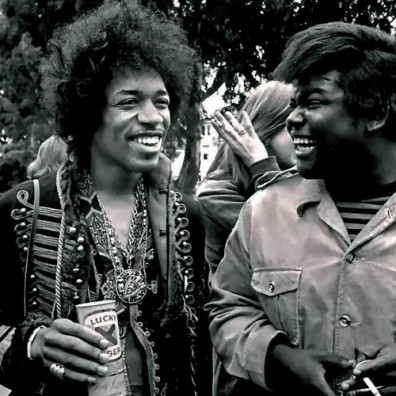
Band of Gypsys
In 1967, a contractual dispute arose in relation to an agreement Hendrix had entered into with producer Ed Chalpin in 1965. The resolution for the dispute included Hendrix having to record an LP of new material for the Chalpin company, which wouldn’t feature the Experience band, and wouldn’t be associated with the Experience band name. In addition, Chalpin was granted 2% of profits from Hendrix’s back catalogue sold in US. For the agreed upon album, Hendrix chose to record BAND OF GYPSYS, a live album.
Along with Billy Cox and drummer Buddy Miles (formerly with Wilson Pickett and The Electric Flag) with whom he had been jamming together since September, Hendrix wrote and rehearsed material which they then performed at a series of four concerts over two nights - New Year’s Eve and New Year’s Day at Fillmore East. The second night produced the material for the Band Of Gypsys LP, which was produced by Hendrix (under the name “Heaven Research”).
Ever since the Band of Gypsys project, there have been rumours that Hendrix had chosen to form the band with black musicians only in order to court the black sector of the music-buying public. Such ideas ignored the fact that Jimi was already popular in the black community, and the fact that Hendrix cautioned against racial barriers in music, saying: “Black kids think the music is white now, which it isn’t. The argument is not between black and white; that’s just another game the establishment set up to turn us against one another…” This message echoes the theme of social harmony which the Band of Gypsys presented in “We Gotta Live Together.”
The Band of Gypsys LP is additionally notable in that it is the only official completely live LP released in Hendrix’s lifetime. The band also released a single “Stepping Stone” which failed to sell, and recorded several studio songs slated for Hendrix’s future LP. In 1999, the tapes from the four Fillmore concerts were remastered and additional tracks and edits were released as “Live At The Fillmore East.” Litigation with Chalpin ended in 2007 after the “singularly uncredible witness” was fined nearly $900,000 for failure to abide by contractual limitations and failure to pay Experience Hendrix L.L.C. its court-ordered royalties.
On the 26th and January 27, 1970, Mitch Mitchell and Noel Redding flew into New York and signed contracts with Jeffery for the upcoming Jimi Hendrix Experience tour. The next day, a second and final Band of Gypsys appearance occurred at a twelve-act show in Madison Square Garden which was a benefit for the massively popular anti-Vietnam War Moratorium Committee, titled the “Winter Festival for Peace.” Similarly to Woodstock, set delays forced Hendrix to take the stage at an inopportune 3am, only this time he was obviously in no shape to play. He played a rendition of “Who Knows” before snapping a vulgar response at a woman who shouted a request for “Foxy Lady.” He played a second song, “Earth Blues”, he then told the audience: “That’s what happens when earth fucks with space -never forget that.” He then sat down on the drum riser for a minute and then walked off stage.
Cry Of Love Tour
A week after the botched Band of Gypsys show, Hendrix, Mitch Mitchell and Noel Redding gave an interview to Rolling Stone for the upcoming tour dates as a reunited Jimi Hendrix Experience. But Redding never even got to rehearse, as Hendrix just continued to work with Billy Cox. Noel was not told he wasn’t going to be playing until the pre-tour rehearsals. Fans refer to this final Jimi Hendrix Experience line-up as the “Cry of Love” band, named after The Cry of Love Tour to distinguish it from the original. Billy Cox has countered on several occasions that this line-up considered themselves “The Jimi Hendrix Experience” before they even went on tour and that any other title was bogus. All billing, adverts, tickets etc. on the tour used “Jimi Hendrix Experience” or occasionally, as previously, just “Jimi Hendrix.”
Two of Hendrix’s later recordings were the lead guitar parts on “Old Times Good Times” from Stephen Stills hit eponymous album (1970), and on “The Everlasting First” from Arthur Lee’s new incarnation of Love’s, not so successful and aptly named LP “False Start.” Both tracks were recorded with these old friends on a fleeting and unexplained visit to London in March 1970, following Kathy Etchingham’s marriage.
He spent the next four months of 1970 working on his next LP tentatively titled “First Rays Of The New Rising Sun”, recording during the week and playing live on the weekends. The Cry of Love tour, launched that April at the LA Forum, was partly undertaken to earn money to repay the Warner Bros loan for completing his Electric Lady Studios. Performances on this tour featured Hendrix, Cox, and Mitchell playing new material alongside older audience favourites. The USA leg of the tour included 30 performances and ended at Honolulu, Hawaii on August 1, 1970. A number of these shows were recorded and produced some of Hendrix’s most memorable live performances.
Electric Lady Studios
In 1968, Hendrix and Jeffery had invested jointly in the purchase of the Generation Club in Greenwich Village. Their initial plans to re-open the club were scrapped when the pair decided that the investment would serve them much better as a recording studio. The studio fees for the lengthy Electric Ladyland sessions were astronomical, and Hendrix was constantly in search of a recording environment that suited him. In August 1970, Electric Lady Studios was opened in New York.
Designed by architect and acoustician John Storyk, the studio was made specifically for Hendrix, with round windows and a machine capable of generating ambient lighting in a myriad of colours. It was designed to have a relaxing feel to encourage Hendrix’s creativity, but at the same time provide a professional recording atmosphere. Engineer Eddie Kramer upheld this by refusing to allow any drug use during session work.
Hendrix spent only two and a half months recording in Electric Lady, most of which took place while the final phases of construction were still ongoing. Following a recording/dubbing session on August 26, an opening party was held later that day. He then boarded an Air India flight for London with Billy Cox, joining Mitch Mitchell to perform at the Isle of Wight Festival.
European Tour
The group then commenced the European leg of the tour. Longing for his new studio and creative outlets, the tour was a commitment that Hendrix was not eager to perform. In Aarhus, Hendrix abandoned his show after only two songs, remarking: “I’ve been dead a long time.” On September 6, 1970, his final concert performance, Hendrix was greeted with some booing and jeering by fans at the Isle of Fehmarn Festival in Germany, due to his non-appearance at the end of the previous night’s bill, (due to the torrential rain and risk of electrocution). Several acts played after he left the stage, and later part of the stage was burnt during the first stage appearance of Ton Steine Scherben. Billy Cox quit the tour and headed home to Memphis, Tennessee, reportedly suffering paranoia after taking LSD earlier in the tour.
Hendrix returned to London, where he reportedly spoke to Chas Chandler, Eric Burdon, and others about leaving his manager, Michael Jeffery. Hendrix’s last public performance was an informal jam at Ronnie Scott’s Jazz Club in Soho with Burdon and his latest band, War.
|
|
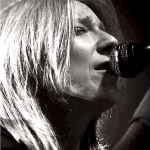
|
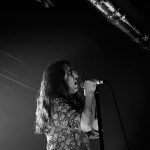
The Answer |
LATEST GALLERY IMAGES
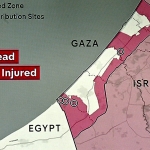
The Price of Food 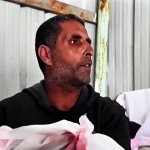
The Invisible Enemy |
|
|


